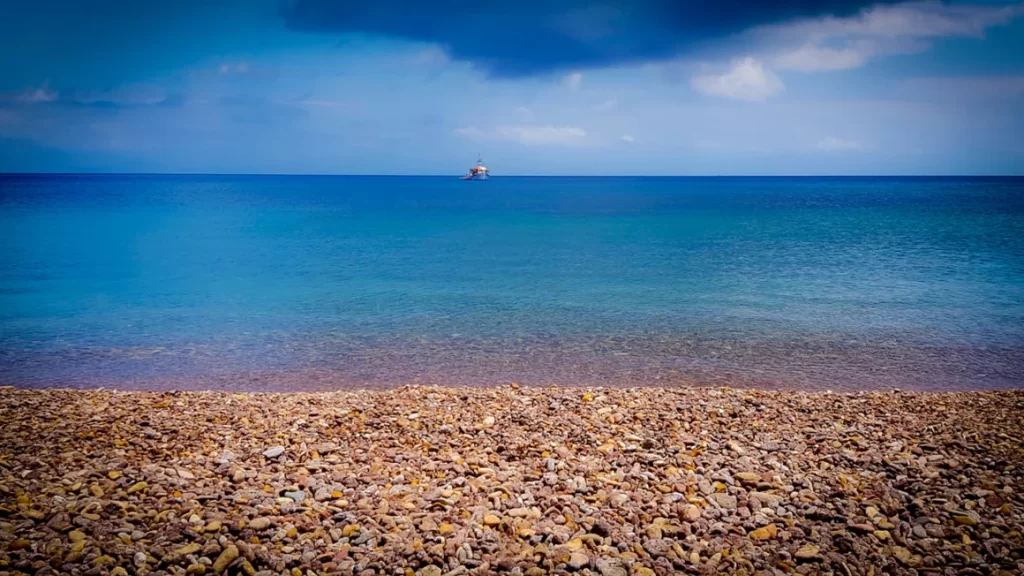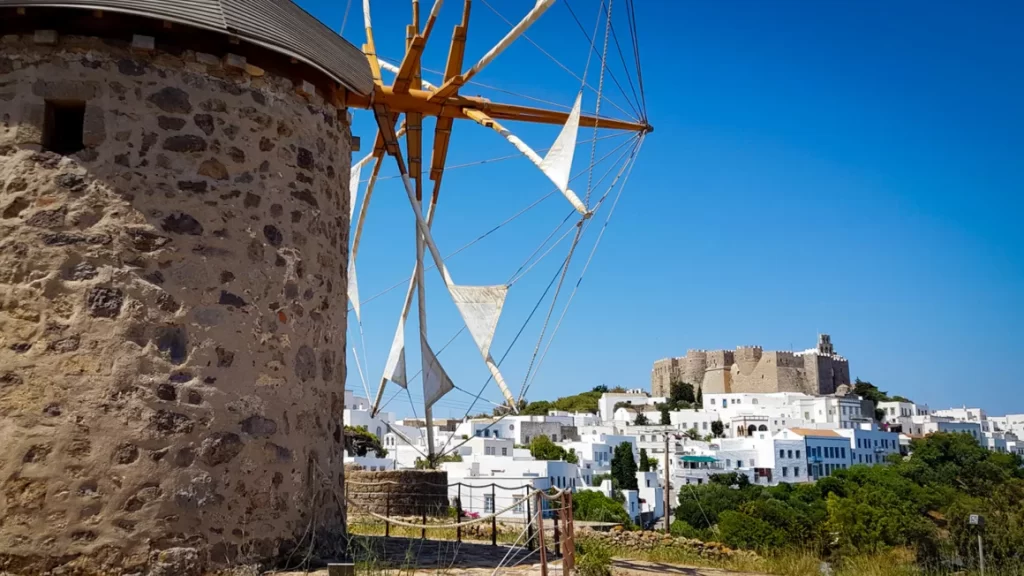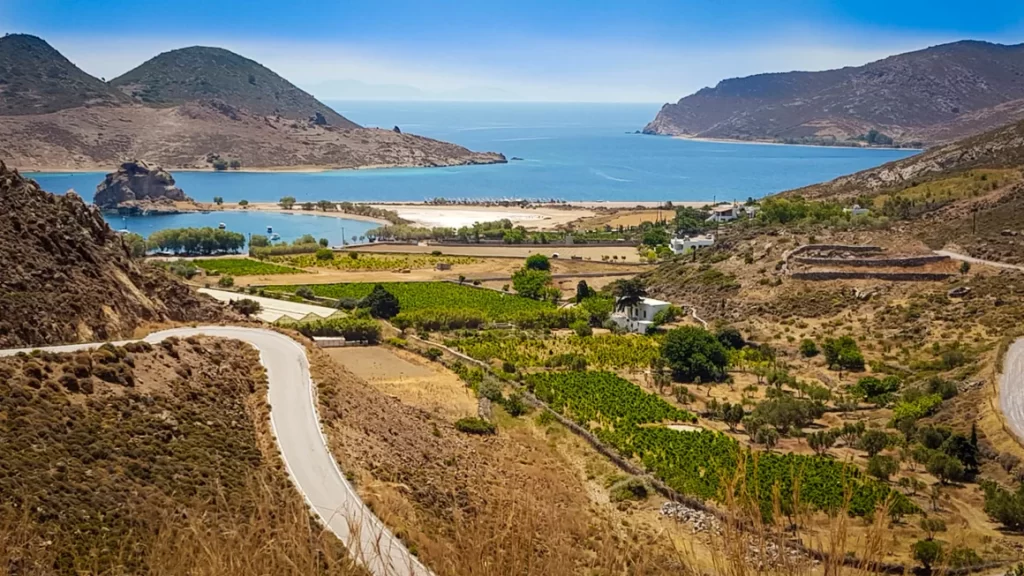News
Patmos: Unveiling the Spiritual Tapestry of the Aegean Archipelago
Nestled gracefully in the cerulean embrace of the eastern Aegean Sea, the island of Patmos unveils a tapestry woven with threads of divine history and earthly beauty. While its sun-kissed landscapes and azure waters may give the appearance of a typical Greek vacation destination, Patmos carries a profound secret within its shores—it is the sacred birthplace of the end of the world. Let’s find out with nowglas.

As you embark on a journey through Patmos, wandering along its winding paths under the eternal blue skies, a subtle aura of serenity blankets the island. It is easy to miss the subtle signs of its remarkable past as you encounter a tranquil priest tending to a modest souvenir stall. However, Patmos is no ordinary retreat; it is a place where infernal visions unfolded, inspiring St. John to inscribe the climactic verses of the Book of Revelation, which mark the conclusion of the New Testament and impart some of the Bible’s most portentous descriptions.
The focal point of this spiritual revelation is the Greek Orthodox chapel of St. Anne, a humble sanctuary constructed in the early 17th century. Within its unassuming walls lies the Cave of the Apocalypse, the sacred space where St. John is believed to have received visions that would shape the destiny of humanity. The entrance to this hallowed grotto is marked by a discreet sign, bearing the simple yet powerful words—”Cave of the Apocalypse.” Stepping inside, you are greeted by a silver miter, a symbol of reverence, positioned above a fenced-off cleft where the biblical figure is said to have rested his head. A silver bracket outlines the crack where his hands are believed to have touched, signifying moments of divine connection.

The chapel’s warden, with a deep understanding of the island’s sacred history, points to an open Bible resting on the rock, recounting how Prochorus the scribe diligently transcribed John’s visions during that sacred encounter. The warden’s gestures guide you through the intimate details—the fissure in the rock where God’s voice purportedly resonated, culminating in a triple point symbolizing the holy trinity of Christianity. The Cave of the Apocalypse is not merely a physical space; it is a portal to the spiritual realms that shaped the destiny of the island and the beliefs of countless faithful around the world.
Yet, the spiritual odyssey doesn’t end here. Ascending from the depths of the cave, the island’s spiritual heartbeat resonates within the Monastery of St. John, a commanding citadel established in 1088 by St. Christodoulos, a Greek monk. The monastery proudly preserves original structures dating back to the 11th century, including parts of fortifications, the kitchen, cells, a cistern, and the Church of St. John. Adorned with breathtaking frescoes, this church is a testament to the enduring legacy of faith on Patmos.

As impressive as the church is, the true treasures lie within the hallowed halls of the monastery’s museum and library. The original “golden bull” issued by Byzantine Emperor Alexios I Komnenos, granting the entire island to Christodoulos, holds pride of place. This ancient seal, adorned with imperial monograms, signifies a sacred covenant that transcends time. A firman, a historical edict from Sultan Mehmed the Conqueror dating back to 1454, confirms the monastery’s independence and designates a monk as a tax collector.
The library, hailed as one of Greece’s most significant outside Mount Athos, cradles 1,200 manuscripts in parchment, vellum, or scrolls. Among these literary treasures are leaves of Mark’s gospel from the 6th century, offering a profound connection to the roots of Christian scripture.
While the cave and the monastery stand as pillars of spiritual significance, Patmos beckons travelers with an additional allure—the pristine beauty of its beaches. Panagos Evgenikos, leader of the island’s council, attests to this multifaceted appeal, noting that beyond religious significance, Patmos captivates visitors with its beaches and the captivating beauty of Chora, the island’s capital.
A leisurely swim at Lambi in the north of Patmos exemplifies this enchantment. The beach, adorned with small, multi-colored pebbles in hues ranging from butterscotch orange to sweet potato red and egg yolk yellow, creates an extraordinary visual spectacle. Another gem, Petra, a sandy spit of land connected to the free-standing rock of Kallikatsou, tells a tale of legend. As the story goes, the rock formed from a young girl cursed by her mother after swimming here straight after Holy Communion, forbidden but defiant.

Grikos, a charming fishing village facing the small island of Tragonissi, serves as another highlight. With its sandy beach sheltered by the natural windbreaker of Tragonissi, Grikos offers a picturesque setting for a tranquil escape.
Patmos, though part of Greece’s Dodecanese island group, stands unique with no airport and limited accessibility. Yet, its allure has drawn celebrities such as the Aga Khan, David Bowie, and Giorgio Armani, who have sought refuge in its tranquil embrace. The island has become a haven for those seeking respite, and several notable figures have left their imprint on Patmos.
Nicholas Negroponte, from MIT’s Media Lab, installed an island-wide Wi-Fi system, providing free internet access for all. Charles Pictet, a financier enamored with Patmos, undertook the restoration of three windmills on a hill opposite the monastery—one of them fully functional, producing wholemeal flour.
Josef Zisyadis, a Swiss politician, envisioned a different contribution—cultivating vines near Petra beach with Dorian Amar, a French winemaker. In 2018, Amar proudly showcased an Assyrtiko white and a Mavrothiriko red under the playful label of “Domaine de l’Apocalypse.” Despite the challenges posed by the island’s terroir, Amar planted trees to create shade, aiming to transform the patch into a paradise over the years.
Patmos, some argue, is already a paradise. Its relative inaccessibility is cherished by those who view it as a sanctuary that must be shielded from mass tourism. The question of an airport looms, yet Christos Patakos, manager of Patmos Aktis, the island’s only five-star hotel, expresses skepticism. In his view, a prevailing sentiment among regulars and homeowners on Patmos is that the island must be “protected” from mass tourism.
Father Bartholomew, a jovial and communicative monk on the island, acknowledges the potential benefits of an airport for medical emergencies but emphasizes the delicate balance required to preserve Patmos’ unique charm. He reflects on the island’s clout, noting that the monastery actively supports the municipality and tourist authorities in matters of development. For instance, when an army base sought artillery exercises during the summer, the monastery intervened and forbade them.
While Patmos has become a retreat for many seeking to recharge their batteries and absorb its energy, tourism on the island is not merely about beach activities. Patmos offers a harmonious blend of spiritual heritage and natural beauty—a tiny Byzantium, often hailed as “the Jerusalem of the Aegean.” The island is a living testament to the delicate equilibrium between tradition and progress, spirituality and leisure.
As you step onto Patmos, you not only step into a destination; you embark on a spiritual odyssey that invites you to explore the crossroads of divine revelation and earthly paradise in the heart of the Aegean. The island’s energy is palpable, its history profound, and its serenity profound—a tapestry woven with threads of spirituality, history, and natural splendor. Patmos is not just an island; it is an enchanting chapter in the grand narrative of the Aegean Archipelago, inviting you to unravel its secrets and be embraced by its timeless allure.
See more: Strictly Star Nikita Kanda Assaulted in Terrifying Street Attack
